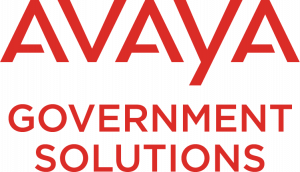As the public sector has ramped up teleworking efforts because of the coronavirus, agencies have learned a few lessons along the way. And now, it’s very clear that unified communications are fundamental in assisting the government in meeting its mission and citizens getting the services they require.
Whether interacting with constituents or coworkers, government employees need to be able to communicate seamlessly and securely in real time. That applies whether they’re in a physical call center or at home.
“Agencies have long needed to enhance their telework capabilities. We believe this is going to change the way people work going forward,” Tim Shalvey, Director of Business Development for Avaya’s Public Sector, said in a recent interview with GovLoop. Avaya is a leading unified communication service provider for government.
Agencies’ needs today will only grow going forward, with an estimated 21 million government contact center and unified communication seats as of 2019. The following steps will help agencies prepare for this future enterprise.
1. Use secure endpoints and certified solutions.
Some of the most valuable information that governments hold is transmitted through conversations, so phones and devices need to be fully vetted.
“With all of the cyberattacks that are prevalent in the world, we need to make sure in the government space that conversations are secure,” Shalvey said.
Shalvey recommended that, where required, agencies go to hardened endpoints that meet federal security requirements. For example, agencies should rely on telephones authorized by their own trusted security officers. The National Telephone Security Working Group provides security officers with resources about unified communication systems that exchange sensitive government information.
2. Prepare to scale up or down.
The government has been going with on-premise systems for so many years now, many employees have become used to the feel of their devices. Although they want the newest technology, they don’t want everything around them to change.
Agencies that work with Avaya can leverage existing unified communication assets as they move to the cloud. Agencies may utilize existing on-premise IT assets, for example, to maintain working analog solutions while connecting into secure cloud resources.
“They’re familiar with operating their technology, so by using those existing devices and being able to bring them into the cloud, the end user experience doesn’t change,” Shalvey said.
Newer endpoints can also be delivered as a service where needed, which reduces capital and upfront cost. No matter where they are in their cloud journeys, agencies can avoid common culture and cost pitfalls when they transition existing assets to the cloud and fill in gaps using device-as-a-service.
3. Construct a resilient enterprise.
Once these endpoints are updated and placed in the cloud, agencies can build out a resilient, multichannel enterprise equipped for internal and external communications.
With these new channels, agencies are ready for virtual conferences that include audio, video and screen-sharing. Agencies can also deploy telehealth services.
By spinning up applications and providing back-up data centers, agencies are more resilient. In the case of physical harm to data centers, agencies can still securely maintain information-sharing and keep powering their mission forward because of uninterrupted communication.
“With modern unified communication channels, cloud-powered applications supporting telework speak to a very high level of resiliency for any agency,” Shalvey said.
This article is an excerpt from GovLoop’s recent guide, “5 Questions You’re Afraid to Ask About Cloud.” Download the full guide here.





Leave a Reply
You must be logged in to post a comment.